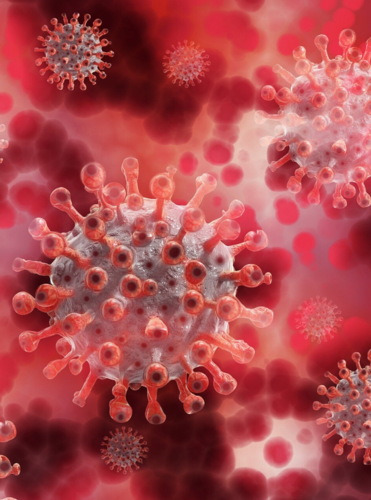Infections with the Coronavirus SARS-CoV-2 can proceed in very different ways – some people have no symptoms at all or only a mild course of disease. Others have to undergo treatment in hospital. But in this case too, there are differences between patients who have to be given artificial respiration in intensive care and those who contract less serious cases of COVID-19. A research team at Hannover Medical School (MHH) has discovered how these two groups treated in hospital differ immunologically. Under the direction of the Institute of Immunology and the Clinic for Hematology, Hemostasis, Oncology and Stem Cell Transplantation, scientists have studied the blood of COVID-19 patients. They established that a certain composition of lymphocytes plays an important role in the course of the disease that are responsible for the targeted immune defence. As the first European study of this type, this research work has been published in the Lancet online journal EBioMedicine. The BREATH scientists Dr. Isabell Pink, Prof. Dr. Marius Hoeper and Prof. Dr. Tobias Welte from the Department of Respiratory Medicine have supported the investigations. Patients with a severe pulmonary disease progression are cared for at the MHH internal intensive care unit.
Number of T-lymphocytes drops in seriously ill COVID-19 patients
„Although we knew that seriously ill COVID-19 patients generally have fewer lymphocytes in their blood“, says Dr. Christian Schultze-Florey, leader of the study together with Prof. Dr. Christian Könecke. „However, we did not know which particular subgroups and to what extent they are actually affected.“ Lymphocytes belong to the white blood cells and, like all blood cells, are formed in the bone marrow. Afterwards they must go through a gestation period in the body before they, as T- or B-lymphocytes, can recognize and attack exogenous cells like bacteria or viruses. In serious cases of COVID-19 – for instance in patients who must be given artificial respiration – all lymphocyte subtypes proved to be reduced compared to healthy controls. This was clearly less pronounced in mild COVID-19 cases.
„Of groundbreaking significance was also the fact that the COVID-19 patients with a milder level of disease displayed more effector T cells already on admission to hospital than patients more seriously affected“, explained Prof. Könecke. Effector T cells are particularly activated T cells that either directly destroy diseased cells or alert the immune system with messenger substances and thus attract additional immune cells. The researchers were also able to detect differences in the course of the COVID-19 disease. If the patients recover from the infection with SARS-CoV-2 and their state of health improves, the number of effector cells in the blood also clearly increases. Memory cells too, which, as a particular form of T cells, recognize pathogens in a reinfection and can thus fight them more rapidly, can be strongly detected again in the course of recovery. If there is no improvement of the disease, however, no such increase occurs.
A more targeted diagnosis and more effective treatment possible
„The T-cell immune response seems to play a decisive role in COVID-19“, says Prof. Dr. Reinhold Förster, Head of the Institute of Immunology. The general decline in lymphocyte subtypes and the effector T-cells could therefore serve as biomarkers to assess the severity of the disease at an early stage by measuring the immune status. „That is important because some patients may seem to be clinically stable when initially admitted to hospital, but already shortly afterwards a severe course of COVID-19 occurs“, emphasizes the Principal Investigator, Dr. Schultze-Florey. These patients could be treated more rapidly and more effectively with a targeted diagnosis. The course of therapy could also possibly be predicted with the aid of the T-cell markers. Thus, already during the treatment it could be monitored whether the patients are responding to it and whether their state of health can be expected to improve.
Text: MHH SZ
Photo: BREATH
